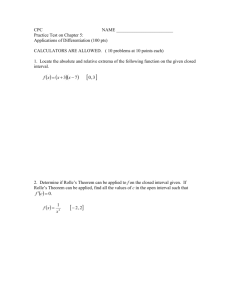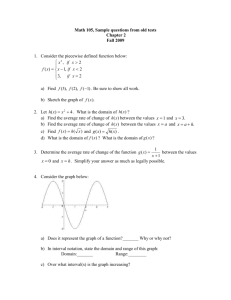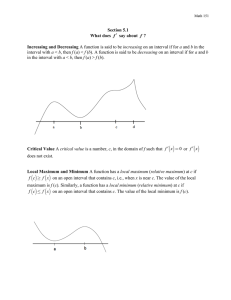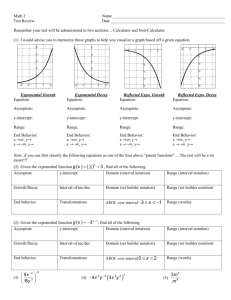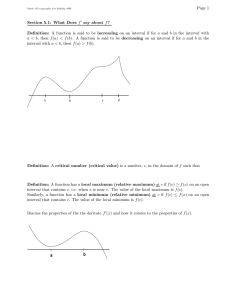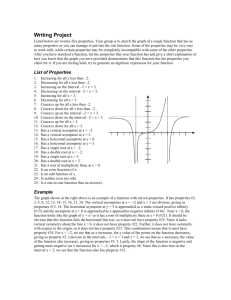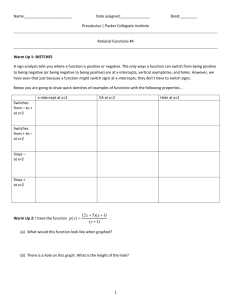Activity_7.2
advertisement
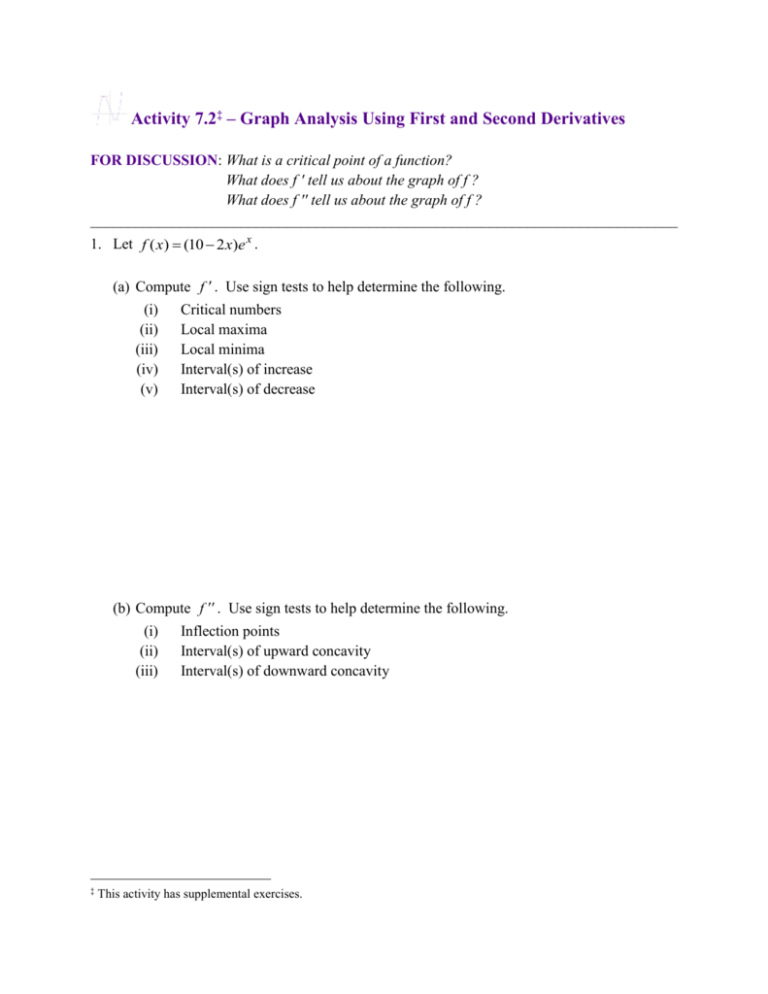
Activity 7.2‡ – Graph Analysis Using First and Second Derivatives FOR DISCUSSION: What is a critical point of a function? What does f ʹ tell us about the graph of f ? What does f ʹʹ tell us about the graph of f ? ______________________________________________________________________________ 1. Let f ( x) (10 2 x)e x . (a) Compute f . Use sign tests to help determine the following. (i) (ii) (iii) (iv) (v) Critical numbers Local maxima Local minima Interval(s) of increase Interval(s) of decrease (b) Compute f . Use sign tests to help determine the following. (i) (ii) (iii) ‡ Inflection points Interval(s) of upward concavity Interval(s) of downward concavity This activity has supplemental exercises. (c) Use the formula for f to help determine the following. (i) x-intercept(s) (set f (x) = 0) (ii) y-intercept (let x = 0) (iii) End behavior (limit at infinity and limit at negative infinity) 10 2 x (Hint: For the limit at –∞, you should write f as f ( x ) x .) e (d) Use the information you found in this problem to sketch a graph of f below. Note the units on the axes. (Hint: Find the y-coordinates for the extrema and inflection points and plot these points.) 100 50 –5 5 2. Sign charts for a function f and its first two derivatives are given. A black dot represents a zero. Assume that the graph of f has no vertical or horizontal asymptotes, and that the graph has a y-intercept at the point (0, –½). Sketch a possible graph of f . – + + –1 1 – + + –½ –1 1 – + 0 0 1 + 1 3. Sign charts for a function g and its first two derivatives are given. A black dot represents a zero, and a white dot represents a vertical asymptote. Assume that the graph of g has a vertical asymptote at x = 1, a horizontal asymptote in both directions at y = 2, and a y-intercept at (0, ½). Sketch a possible graph of g . + + –1 1 – – + –1 – + 1 + –2 + 1 –2 –1 0 1 2 4. The graph of the velocity v (t ) of an object is given on the interval [0, 6]. Assume that the object is at the “origin” at t = 0 and t = 2. Fill in the sign charts, and use this information to sketch possible graphs of acceleration a (t ) and position s (t ) . Then fill in the blanks. y = v(t) (a) (v) 3 3 Moving to left: ____________________ Moving to right: ____________________ At rest: ____________________ y = a(t) (b) (a) 3 3 Speeding up: ____________________ Slowing down: ____________________ (Careful here! You cannot merely look at the signs of acceleration. You must also look at the signs of velocity.) (c) y = s(t) (s) 3 3 Left of origin: ____________________ Right of origin: ____________________ At origin: ____________________
